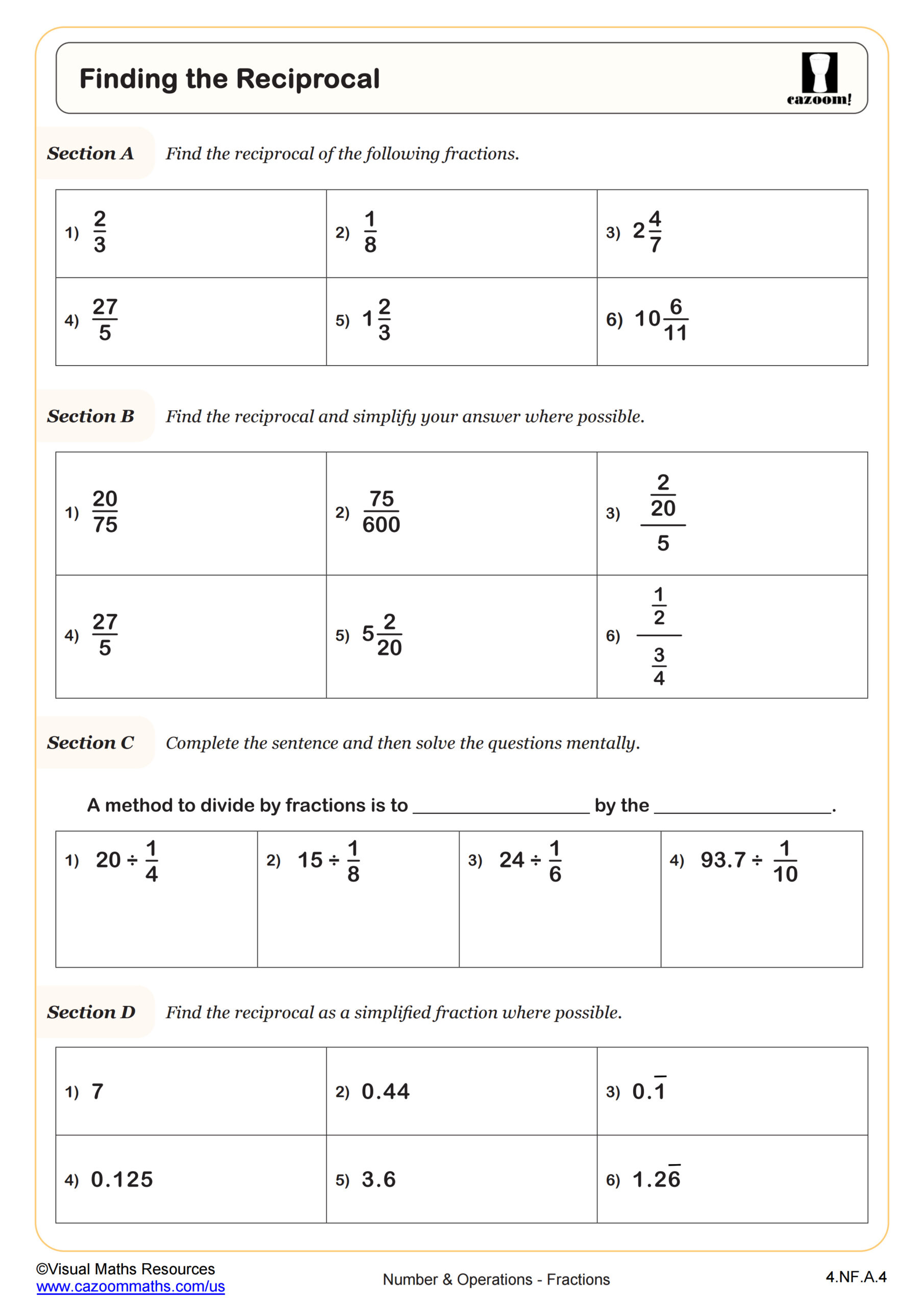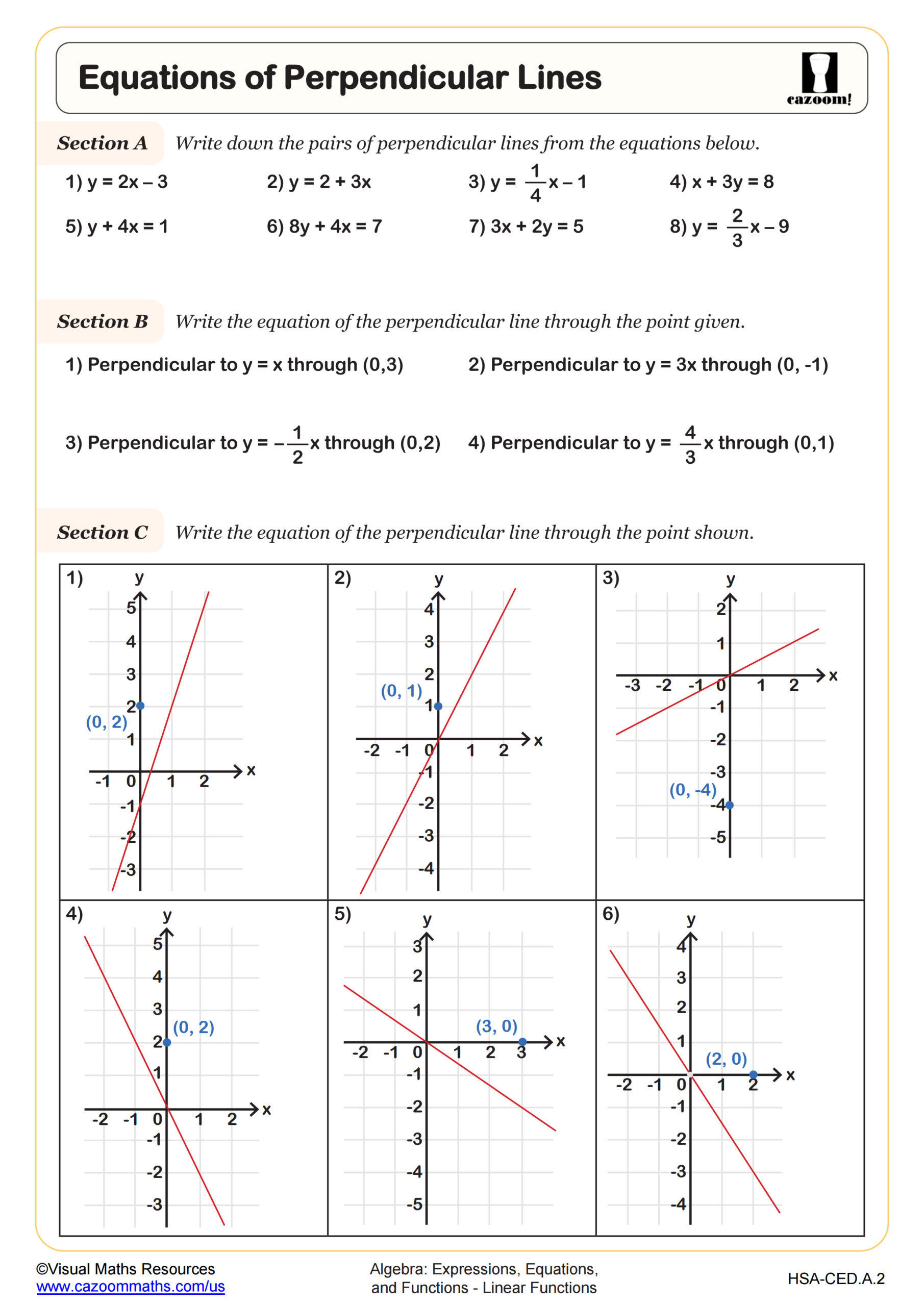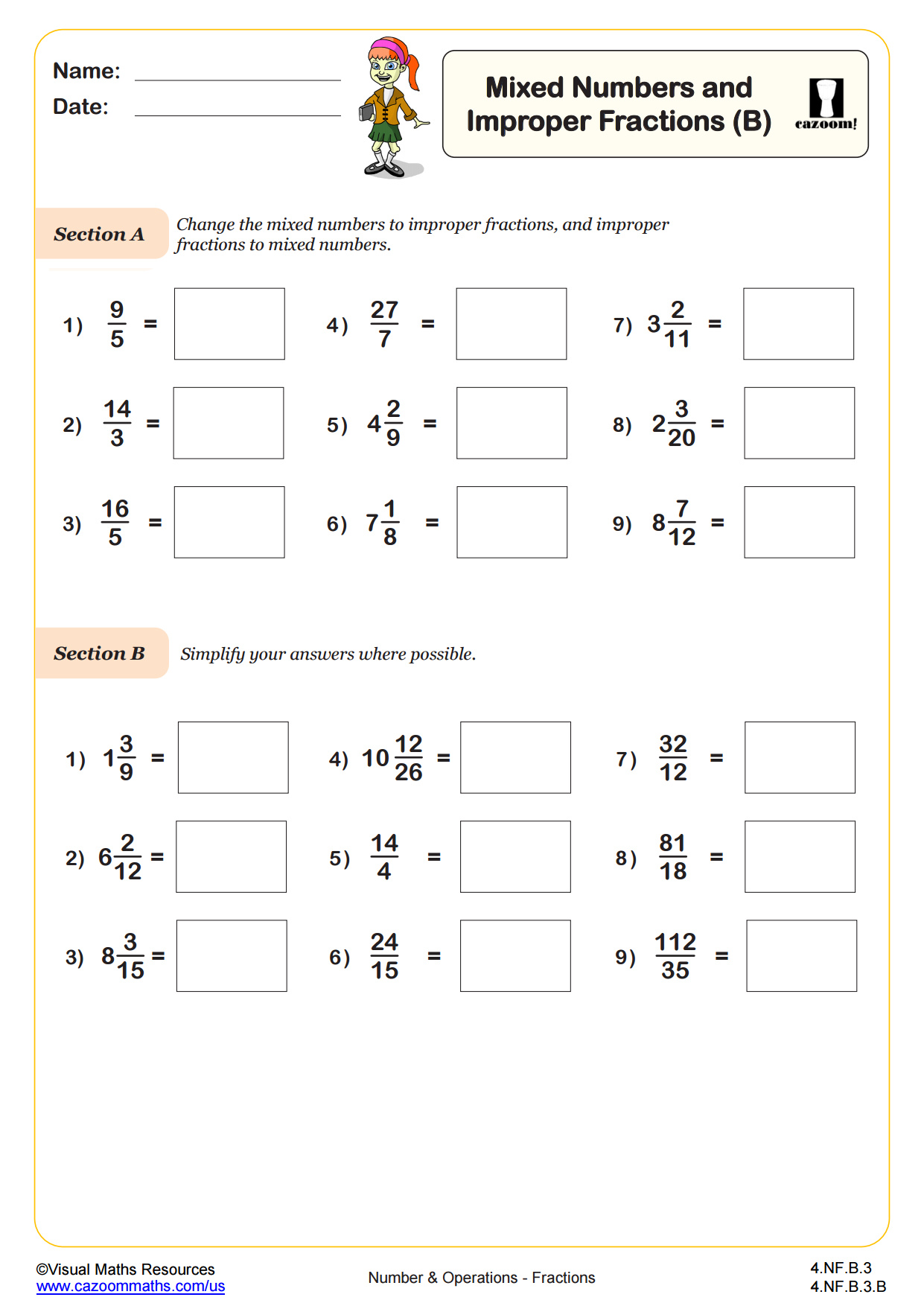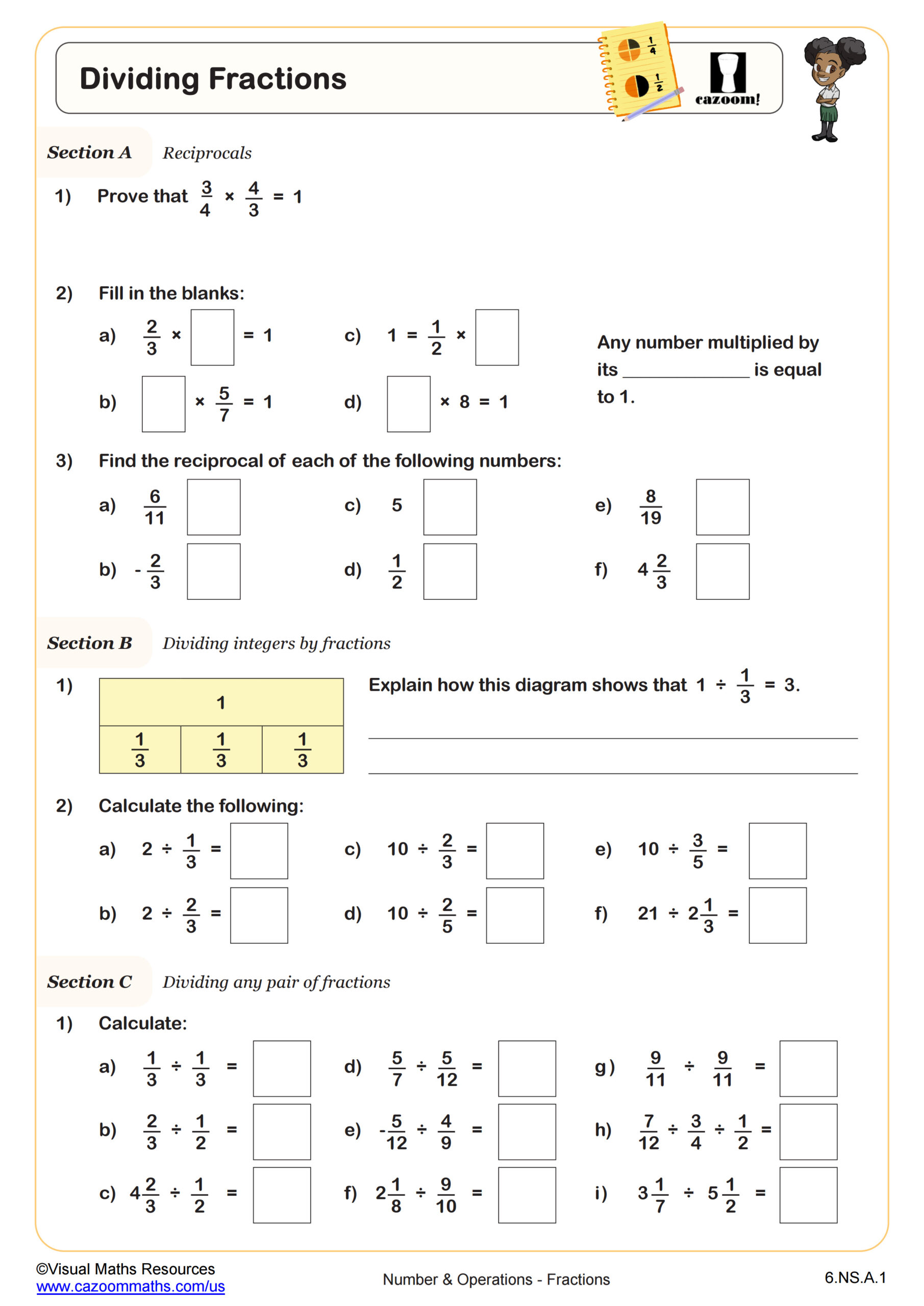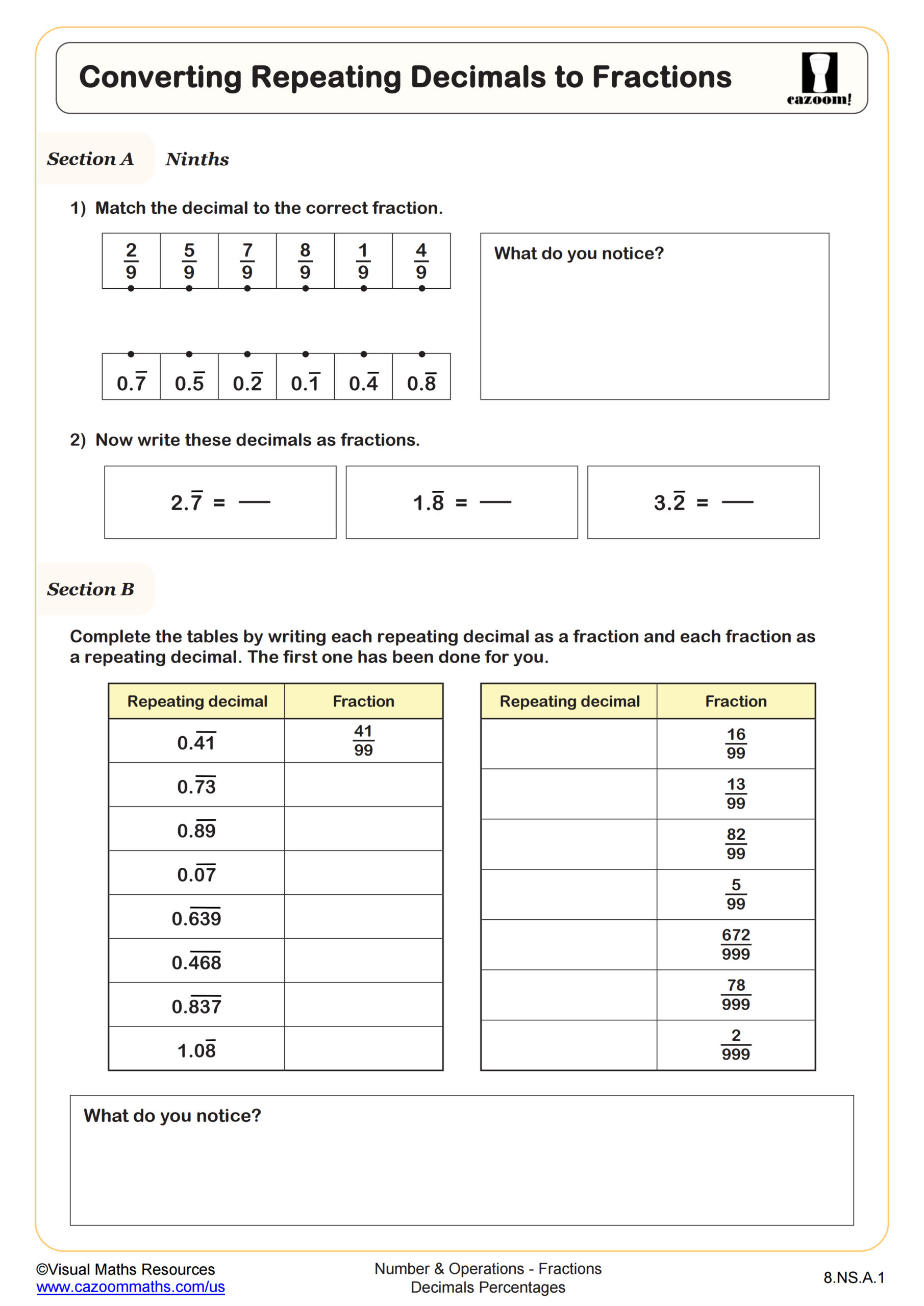Back to:
Finding the Reciprocal WORKSHEET
Suitable for Grades: 5th Grade
CCSS: 5.NF.B.7
CCSS Description: Apply and extend previous understandings of division to divide unit fractions by whole numbers and whole numbers by unit fractions.1 a. Interpret division of a unit fraction by a non-zero whole number, and compute such quotients. For example, create a story context for (1/3) ÷ 4, and use a visual fraction model to show the quotient. Use the relationship between multiplication and division to explain that (1/3) ÷ 4 = 1/12 because (1/12) × 4 = 1/3.b. Interpret division of a whole number by a unit fraction, and compute such quotients. For example, create a story context for 4 ÷ (1/5), and use a visual fraction model to show the quotient. Use the relationship between multiplication and division to explain that 4 ÷ (1/5) = 20 because 20 × (1/5) = 4. c. Solve real world problems involving division of unit fractions by non-zero whole numbers and division of whole numbers by unit fractions, e.g., by using visual fraction models and equations to represent the problem. For example, how much chocolate will each person get if 3 people share 1/2 lb of chocolate equally? How many 1/3-cup servings are in 2 cups of raisins?
Finding the Reciprocal WORKSHEET DESCRIPTION
Practice finding and using the reciprocal with this worksheet.
Section A asks students to find the reciprocal of proper and improper fractions and mixed numbers. None of the reciprocal fractions need simplifying.
Section B is as above; however, the answers may need simplifying. This section also contains two questions where the reciprocal after fraction division is to be found.
Next up, section C demonstrates how we use the reciprocal to answer fraction division questions.
Finally, students combine their knowledge of fraction and decimal equivalence and finding the reciprocal, as in section D, they are required to find the reciprocal of 6 decimal numbers, including two recurring decimals.
